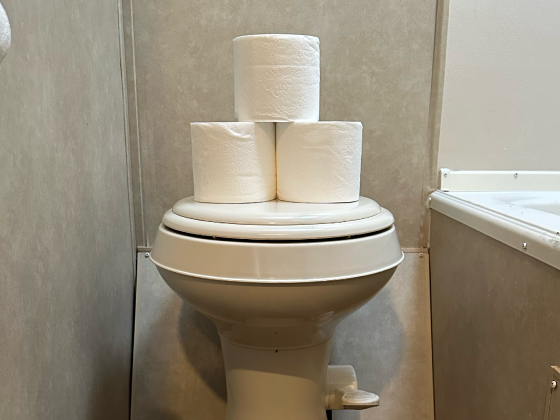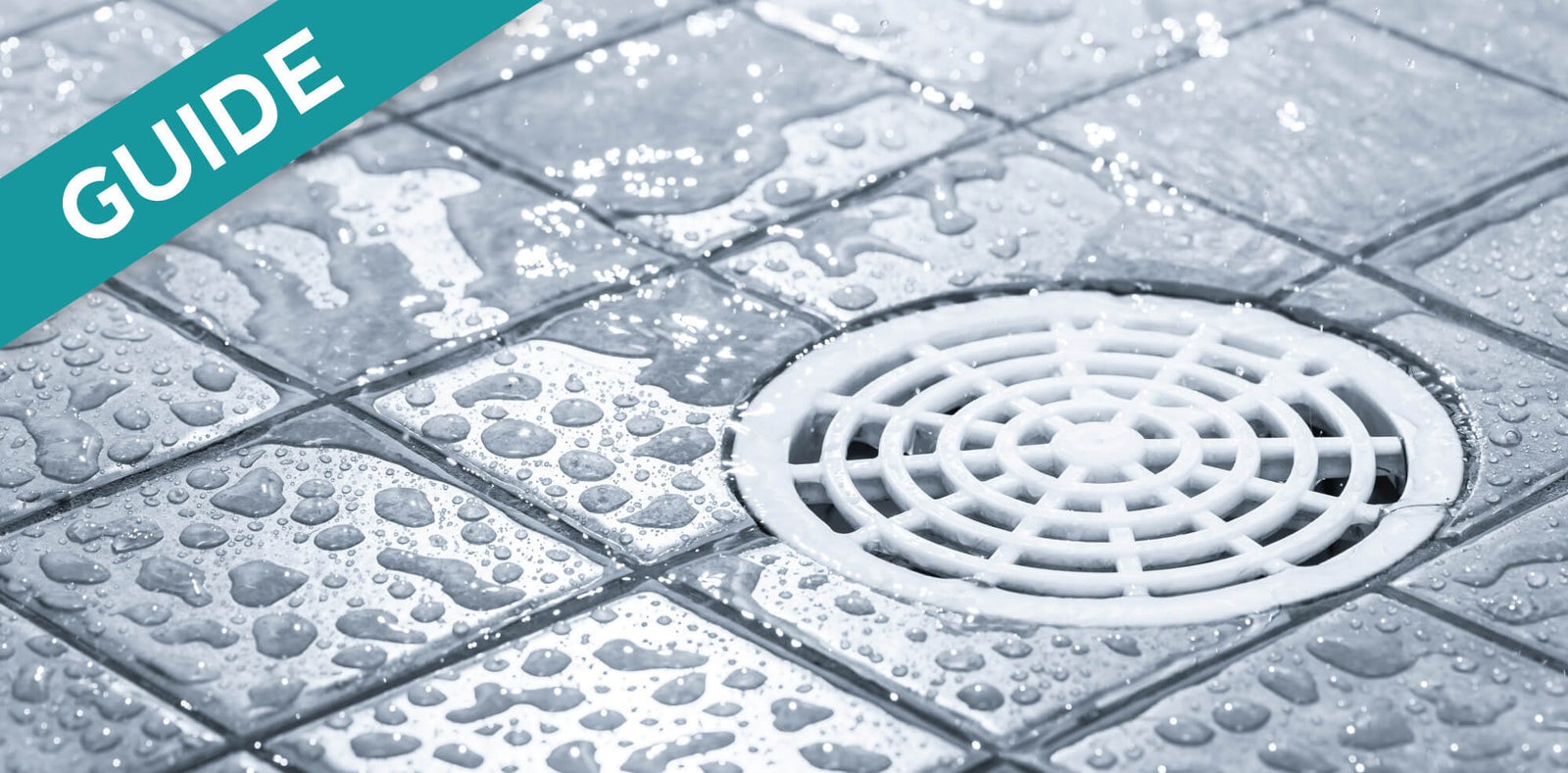Key Points:
- Any part of your RV’s water system is susceptible to freezing and damage without the right prevention measures, some more costly than others.
- There are many tools on the market that can be used for unfreezing frozen pipes and tanks, and some can be used for freeze prevention as well.
- Be sure to use thawing tools properly and safely to avoid the risk of fire or damage.
Frozen pipes and tanks are a cold weather camper’s nightmare, which is why taking preventative steps is so important when camping in cold weather. Fortunately, thawing frozen tanks and pipes might not be that hard if you have the right tools with you. Many of these thawing techniques are also preventative measures, and the tools used to prepare for cold weather should be staple items in your RV if you will be camping through the winter, and even if you will be camping in the fall or very early in the spring when the weather in many areas can surprise you with early or late freezing temperatures. In this article, we will discuss the parts of the RV water system that could freeze, tools you might want on hand to thaw frozen tanks and pipes, and some of the techniques when using those tools to avoid damage during the thawing process.
Components Most Likely to Freeze
Almost any part of the RV’s water system could freeze during sustained sub-freezing temperatures without any heating or insulation methods employed, but freezing in some parts could be much more costly than in others.
- Water pump - this is the pump that pushes fresh water through the lines to the sinks, shower, and toilet. Ice formation inside the pump’s delicate innards can fracture and become badly damaged as the freezing water expands, so be sure that if you suspect the pump has frozen to work on thawing this first and confirm whether or not it has been severely damaged. Damage to the water pump could end your trip prematurely and cost a lot to repair or replace it, so if you aren’t yet dealing with freezing water pump issues, be sure you have preventative measures in place.
- Fresh water lines - the lines that carry fresh water to the sinks, shower, and toilet may have bends in them where water can sit and freeze. If you have not been running your inside heater or your fresh water lines exist on the underside of the RV (not within the living space) and do not have insulation, they can freeze faster than you might think in consistent freezing temperatures.
- Fresh water hook-up garden hose - when you are on water hook-ups, the garden hose that delivers the fresh water to your RV will be sitting outside in the cold and the water in it can easily freeze in the hose. This can cause major problems when you’re trying to get water to move; because it’s outside in the elements, it can easily freeze and block the line from moving water through your RV.
- All holding tanks - these tanks are susceptible to freezing because they may exist under the RV instead of inside the living space. The soap and organic residue in black and gray tanks will help to lower the freezing point slightly, but without other insulation or heating methods, there is still a definite risk of freezing. RVs with the freshwater tank on the outside of the living space are also at higher risk of freezing.
Preventative measures are always better than waiting until a problem pops up, so if you are using insulation methods and heaters before temperatures drop below freezing, you shouldn’t have to worry about freezing pipes and tanks. However, it’s always a good idea to have some “unfreezing” tools on hand just in case the worst should happen.
Tools to Unfreeze RV Pipes and Tanks
Many of the techniques that you can use to unfreeze pipes and tanks are also preventative measures that you should employ before temperatures drop, which is a win-win because you will already have what you need to prevent freezing in the first place.
- Heat gun - these are very affordable and range from the low price of $18.99 to as high as $133. For the purposes of thawing pipes, opt for the less expensive option that really does the same thing as the more expensive one, and toss it in your winter tool kit just in case.
- Hair dryer - if you want to opt for a hair dryer you already own over a heat gun, this can help with thawing too. However, keep in mind that most hair dryers have a much lower maximum temperature than heat guns, which have a much higher maximum temperature. Since a heat gun reaches higher temperatures, it means less time under the RV thawing, which is always better, right!
- Heating cable or heating tape - there is a difference between heating cables and heating tape. Heating tape is usually made out of silicone or a poly blend, is flatter than heating cables, and tends to be on the more expensive side ($100 or more for most). Heating cables look similar to extension cord cables (more rounded as opposed to flat) and are usually less expensive. Most of the heating cable and heating tape options out there are thermostat controlled so the heating element always kicks on just before freezing temperatures are detected and all types will need access to electricity, so it’s really up to your own preference. Keep in mind, however, that while most use a standard three prong cord, some are trace cables where it must be directly wired into the electricity source. These are tools that can help you both prevent freezing pipes and thawing already frozen pipes.
- Heating blanket - typically, heating blankets are used for the tanks themselves and they are much like electric blankets you might use in your home but much more outdoor hardy and can put out higher heat. Depending on the size of the blanket, voltage, and type of material, price can vary from about $15 up to $200. These blankets work better for freeze prevention, but they can also be a valuable item in helping to unfreeze frozen tanks.
- RV skirting - this is primarily a freeze prevention technique that is installed around the outside of the RV to block cold air from getting underneath. Using RV skirting while trying to thaw frozen pipes or tanks will speed up the process because any heat generated under the RV from other unfreezing techniques will not be blown away by cold winds and will instead be retained underneath.
- RV antifreeze - this is also primarily a freeze prevention method and shouldn’t be the primary unfreezing approach, but once you have drain pipes and wastewater tanks partially thawed, you can begin to add antifreeze to not only get ahead of another freeze, but also begin slowly melting the ice.
Now that you know which tools you should have on hand, we will walk you through how to use them to thaw your pipes and tanks.
How to Unfreeze RV Holding Tanks and Water Lines
Ice starts melting at any temperature that is above 32 degrees F. However, the higher the temperature, the faster ice will melt, so if you want frozen tanks and pipes to melt quickly, you want to evenly cover the frozen area with higher temperatures to thaw the problem quickly.
Before we dive into how to thaw your pipes, it’s important to first check your pipes, tanks, and even your water pump to be sure there has not been any damage done. If a pipe has cracked under the pressure of the expanding ice and you unfreeze the pipe, the mess could make your already bad day even worse. If you do find a cracked pipe, turn off the fresh water and the water pump before thawing the pipes and place a tub below the pipe to catch the dripping water as the ice melts. In the case of a cracked pipe or damaged pump, you may need to cut your trip short to make repairs or call a plumber to fix the problem.
Once you have assessed and determined there is no damage, try to figure out where the freezing has occurred.
- If you can get water out of one side of the sink faucet but not the other, then the frozen portion is probably between the two fixtures. You may need to simply run a heat gun or hair dryer back and forth just above the faucet until water is running again.
- If neither side of the faucet runs water, then the frozen pipe is probably under the RV, or the freshwater tank or hook-up hose has frozen.
- If you try to dump your black or gray tank and nothing comes out, the discharge valve or the whole tank may have frozen.
Locate the frozen lines or tank under the RV and employ one of several thawing methods:
- Check the water pump (the most costly repair) first to be sure it has not frozen.The water pump is usually located within 2-3 feet of your freshwater tank, so if the fresh water tank exists outside of the living space, it’s possible the water pump may as well. If you suspect any part of the water pump may be frozen, start thawing it out using a heat gun or propane heater (always consider where your pump is located before choosing a thawing method and practice safe use of these tools to avoid fire risk).
- Wrap the lines with heating tape or heating cable and let them slowly thaw from the heat of the cables. Be sure to open at least one side of each sink faucet because once the ice is thawed, pressure will return and the water will need somewhere to go to avoid damage to the pipes and valves. Most heating cable and heating tape products will tell you what kind of materials they work well with; most will work fine with rigid plastic (like PVC pipe) without melting them. Heating cables and heating tape usually have a thermostat on them that detects when freezing temperatures are present, so you shouldn’t have to monitor these while they work.
- Use a heating gun or hair dryer to thaw a specific section of pipe. Do not leave the heat sitting on one portion of the pipe for too long. Treat it like a paint spray gun by slowly and consistently moving the heat from one end of the pipe to the other without stopping. This will allow the heat to distribute and thaw evenly along the entire length of pipe and helps to avoid melting any non-metallic piping that is frozen.
- Install a heating blanket over the frozen tank. Heating blankets for RV holding tanks act just like heating blankets for your bed, but at higher temperatures and are more weather resistant. They usually have adhesives that help them cling to the tank, and also have sensors that will turn the heat on when it detects temperatures lower than 38 degrees or so. While these are primarily anti-freezing tools, they can still help melt the layer of ice just on the other side of the tank wall; eventually, it will help the rest of the ice in the middle thaw as well.
- Place a portable propane heater under the RV. This thawing tool generates a lot of heat and can provide very quick thawing power, but it does pose a risk of fire or carbon monoxide poisoning, so don’t walk away from your RV or go to bed with this running under your RV. Even if you’re certain it is well away from flammable items, there could still be a fire risk because of how much heat it is capable of producing, and carbon monoxide is odorless, so you won’t know it’s a problem until it’s too late; be sure to have carbon monoxide detectors installed in your living space. It’s also good practice to leave faucets open while the heater is thawing so that the melted ice has somewhere to go instead of damaging the pipe because of trapped pressure. Placing RV skirting around the RV while the heater is going will reduce the amount of time you’ll need to run it because the skirting will help trap the heat under the RV.
- Apply RV skirting to trap heat underneath and block cold air. RV skirting is typically applied to prevent freezing, but applying it after tanks and pipes have frozen can help trap the heat from your thawing methods under the RV and make the process go faster.
- Use RV antifreeze in your wastewater tanks and drain lines to prevent further freezing and assist in thawing. Antifreeze will provide a small amount of help in thawing ice, but this should not be treated as a primary thawing technique. This should be used in conjunction with an unfreezing approach like heating cables, heating blanket, or propane heater. Once enough thawing has taken place, start pouring RV antifreeze into the wastewater tanks to speed up the process and prevent further freezing.
Note: We recommend NEVER putting antifreeze into your freshwater tank if you are using it.
Keep in mind that in order to use heat guns, hair dryers, heating blankets, or heating cables/tape, you must have access to electricity, either through a generator or electric hook-up. These methods will not be an option if you are boondocking without a generator. If there are other thawing methods not mentioned here that you have questions about, contact our customer service; we are happy to help you find the most effective ways to solve your problem.
Review
The best approach is to implement freeze prevention measures beforehand any time you know temperatures will drop near or below freezing. We cover more detail on those prevention techniques in our guide on How to Keep Your RV Holding Tanks from Freezing. Here’s a brief review of what we covered in this guide:
- The portions of your RV water system that could freeze:
- Water Pump
- Fresh water lines
- Fresh water hook-up hose
- All holding tanks
- Thawing tools and supporting items:
- Heat gun or hair dryer
- Heating cable or heating tape
- Heating blanket
- Propane heater
- RV skirting
- RV antifreeze
- Unfreezing tanks and pipes:
- Check the water pump (the most costly repair) to be sure it has not frozen.
- Wrap the lines with heating tape or heating cable and let them slowly thaw from the heat of the cables.
- Use a heating gun or hair dryer to thaw a specific section of pipe.
- Install a heating blanket over the frozen tank.
- Place a portable propane heater under the RV to thaw both tanks and pipes.
- Apply RV skirting to trap heat underneath and block cold air.
- Use RV antifreeze in your wastewater tanks and drain lines to prevent further freezing and assist in thawing.
As an Amazon Associate, Unique Camping + Marine earns from qualifying purchases.

Prevent Common Problems In Your Tanks!
From misreading sensors, preventing clogs, or eliminating odors, we've got you covered no matter how you camp! All our best holding tank tips and trick information plus more can be found conveniently in one place when you download our FREE Unique Method Field Guide. Achieve holding tank bliss today!
Get The Free Download



